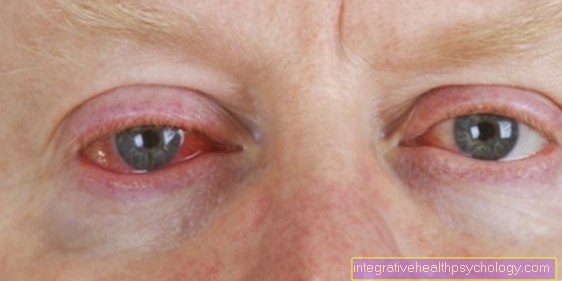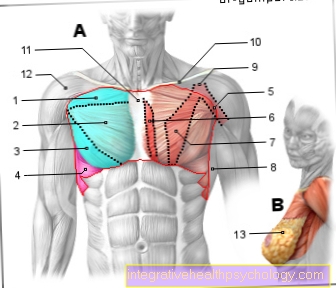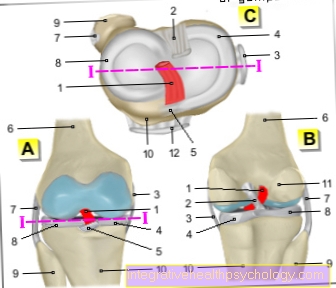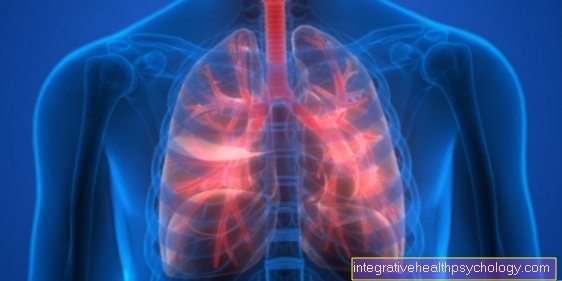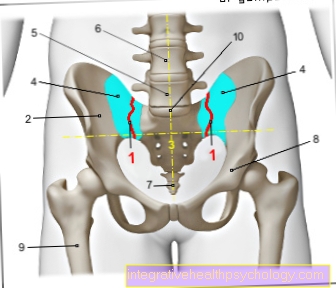Treatment of testicular cancer
Treatment and prognosis of testicular cancer
The advanced Treatment of testicular cancer after operative removal of the testicle takes place depending on the type of tissue Testicular cancer. It is directed against any remnants of tumor cells and against metastases that are already in, for example liver, lung or Lymph nodes may have arisen. Depending on the findings, the patient receives either chemotherapy or irradiation of the affected area. Also one Lymph node removal in the back of the abdomen is an option.
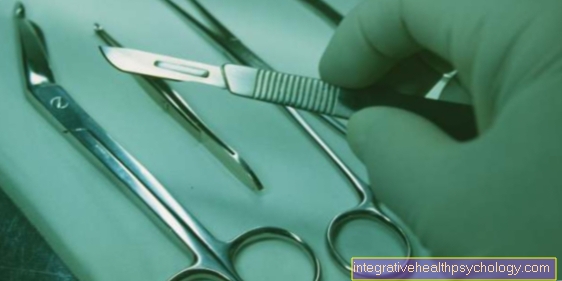
The division into several stages takes place according to the international Workshop on Staging and Treatment of Testicular Cancer, Lugano. According to this, the treatment . This only has a negative influence on fertility and potency in the case of previously existing reduced fertility or Erectile function. If a man is healthy in this regard, one testicle is enough to make enough testosterone (male sex hormone) for sperm production and erection to produce.
- Treatment / prognosis of the seminoma:
in the clinical stage I. (there are no metastases here) the healing rate by simply removing the testicle is included 80%. Within this stage there is a further division into low risk and high risk Tumors. The size and extent of the tumor within the testicle play a role here.
Low-risk tumors are mostly only observed further; should be Relapse (Relapse of testicular cancer) for example in the lymph nodes next to the Main artery occur, radiation or chemotherapy takes place. This procedure is called Surveillence Therapy, so wait and see. For this, however, a very good cooperation between doctor and patient is necessary, since a close control over many years has to take place. At low-risk seminomas This is because late recurrences can occur even after 10 years. However, a relapse of the low risk seminoma only happens in 20% of cases. Thus, the surveillance method offers the patient a certain protection against unnecessary or superfluous ones treatment which always entails certain risks and inconveniences.
The standard therapy for high-risk tumors is this para-aortic irradiation. Here, between the 11th thoracic and 5th lumbar vertebrae on both sides, next to the aorta (Main artery) radioactively irradiated in several sessions. This results in the destruction of any micrometastases that may be present (the smallest accumulations of tumor cells that cannot be recognized in the imaging).
An alternative to this is the chemotherapy With Carboplatinwhich is standard therapy in more advanced stages, but can also be appropriate in the early stages of high-risk seminoma.
If the patient does not want to undergo radiation or chemotherapy, surgical removal of the para-aortic (adjacent to the aorta) Lymph nodes respectively.
Thus, in the seminoma in clinical stage I, a cure rate of almost 100% in the treatment of Hedge cancer can be achieved.
In stage II (Metastases are present in the lymph nodes in the back of the abdomen) in the treatment of testicular cancer, the affected area is usually irradiated as in stage I. Here, however, the required radiation dose differs depending on the size and number of the lymph node metastases. Alternatively, chemotherapy with 3 substances can be administered. Even at this stage of testicular cancer, the overall survival rate is almost 100%.
- Therapy / prognosis of the non-seminoma:
The division of the spread levels of the non-seminome takes place in principle as with the seminome. In stage I, a distinction is made between low-risk and high-risk tumors. In the case of low-risk tumors, the surveillance method (see treatment of seminoma) is first used to treat testicular cancer. If the testicular cancer relapses or metastases develop, chemotherapy with three different substances is carried out.
High-risk patients first receive chemotherapy; alternatively, lymph nodes can be removed from the back of the abdomen. The overall healing rate at this stage corresponds to that of the seminoma with almost 100%.
If lymph node metastases have already formed when diagnosing non-seminomatous testicular cancer, the disease is in stage II. Here, however, the cure rate is still 98%. If the tumor markers are elevated at the same time, chemotherapy is carried out. If the markers in the blood are not elevated, the surveillance method is used to first observe for 6 weeks whether the tumor markers rise, which would mean a progression (progression) of the testicular cancer. If this is the case, chemotherapy is also started. The markers can, however, also fall or remain unchanged at the same level.
In the latter case, an operation is performed in which the lymph nodes are removed from the back of the abdomen. If the tumor markers drop by themselves, no further therapeutic step needs to be initiated, but close monitoring is indicated.
Advanced testicular tumors that have metastasized to other organs are treated with chemotherapy with good overall results. The cell-toxic substances used in the treatment of testicular cancer also affect the settlements in e.g. liver or lungs. The 5 - year survival rate is at the so - called good prognosis group (This classification is based on the level of the tumor marker values and the location of the metastases) for seminomas 86% and for non-seminomas over 90%. In the intermediate prognosis group, the figures are 73% and 80%, respectively, and in the poor prognosis group, i.e. in the worst case, 50% of men still live with a non-seminoma after 5 years. However, this last group does not even exist in the seminars.
Also read: Testicular Implants - Why Are These So Popular? or Testicular prosthesis

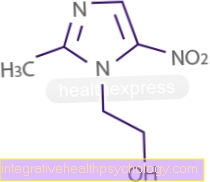


.jpg)

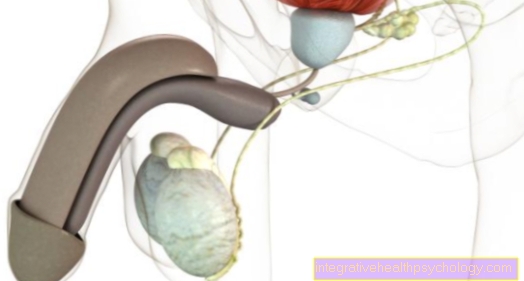
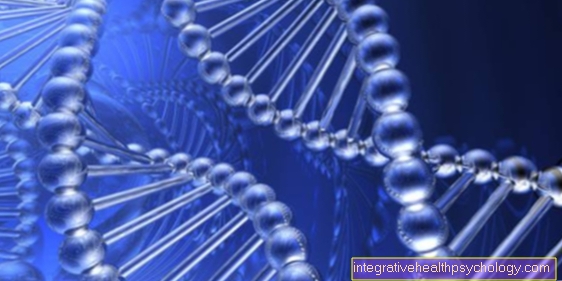



.jpg)



